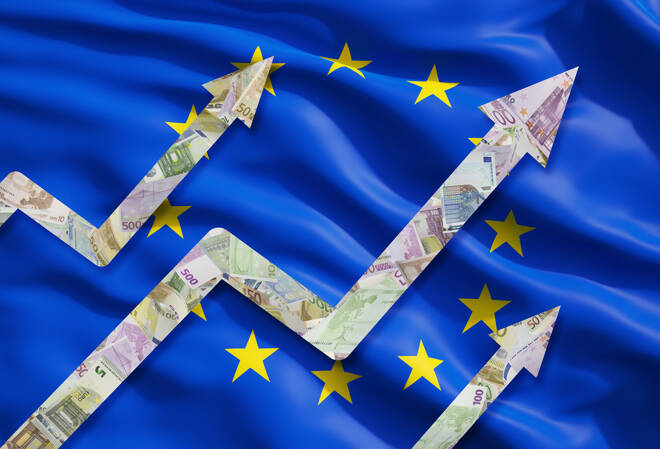Advertisement
Advertisement
European Equities: A Week in Review – 09/10/20
By:
U.S politics drove demand for the majors in the week. Another spike in new COVID-19 cases and new containment measures failed to weigh...
The Majors
It was another bullish week for the European majors in the week ending 9th October.
The CAC40 and EuroStoxx600 rose by 2.53% and by 2.11% respectively, with the DAX30 rallying by 2.85%.
Events in the U.S took center stage throughout the week, driving the European majors.
Support kicked in from the start of the week following news of Trump’s return to the White House.
With the markets focused on progress towards a U.S COVID-19 stimulus bill, Trump’s call to end negotiations until after the election came after the European close early in the week.
Avoiding a retreat alongside the U.S majors, Trump then announced plans to deliver aid for airlines and other stimulus measures.
Hopes of a piecemeal plan delivered a 4th consecutive day in the green for the European majors on Thursday.
At the end of the week, continued hope of a stimulus bill delivered 5 consecutive days in the green for the DAX30.
On the economic data front, private sector PMI numbers from Germany and Italy, impressed, while France and Spain struggled.
Germany’s composite PMI hit a 2-month high, driven by manufacturing sector output rising at the fastest pace in over two-and-a-half years. The positive PMIs supported the upside in the DAX for the week.
The Stats
It was a particularly busy week on the Eurozone economic calendar.
In the early part of the week, September’s private sector PMIs for Italy and Spain and Eurozone retail sales figures were in focus.
Finalized PMIs for France, Germany, and the Eurozone also influenced, however.
The PMIs were skewed to the positive, with better than expected numbers from Italy. There were also upward revisions to Germany and the Eurozone’s services and composite PMIs.
Over the remainder of the week, the focus remained on Germany. August factory orders, industrial production, and trade data were in focus.
While factory orders impressed, industrial production and trade data disappointed. The impact was muted, however, with the jump in factory orders aligned with Germany’s PMI numbers for September.
On the monetary policy front, the ECB monetary policy meeting minutes provided little influence late in the week.
From the U.S
It was a quieter week on the economic data front.
Key stats included September’s ISM Non-Manufacturing PMIs, August JOLTs job openings, and the weekly jobless claims figures.
While the stats were skewed to the negative, a pickup in non-manufacturing sector activity was a plus for the majors. In September, the ISM Non-Manufacturing PMI rose from 56.9 to 57.8.
On the labor market numbers, there was some concern, however, with the weekly jobless claims figures raising yet more red flags.
In the week ending 2nd October, initial jobless claims came in at 840k, down only marginally from the previous week’s 849k. The figures suggested that the labor market recovery may have stalled going into the 4th quarter.
Ultimately, however, it was U.S politics that offset the effects of the negative stats in the week.
The Market Movers
From the DAX, it was a bullish week for the auto sector. Continental and Volkswagen rallied by 4.08% and by 4.14% respectively to lead the way. BMW and Daimler weren’t far behind, with gains of 3.90% and 3.06% respectively.
It was another bullish week for the banking sector. Commerzbank and Deutsche Bank rallied by 9.21% and by 8.25% respectively.
From the CAC, it was a bullish week for the banks. BNP Paribas and Credit Agricole rallied by 9.61% and by 5.79% respectively. Soc Gen led the way, however, surging by 12.5%.
The French auto sector also saw green. Peugeot rose by 2.17%, with Renault ended the week up by 7.50%.
Air France-KLM managed to claw back some recent losses with an 11.25% gain, while Airbus rose by a more modest 3.34%.
On the VIX Index
It was the 1st week in the red from 3 for the VIX. In the week ending 9th October, the VIX fell by 9.52%. Reversing a 4.74% gain from the previous week, the VIX ended the week at 25.00.
U.S politics drove demand for riskier assets at the expense of the VIX.
Progress towards further U.S stimulus, Trump’s return to the White House, and hopes of an uncontested election result were the key drivers.
For the week ending 9th October, the S&P500 and the Dow ended the week up by 3.84% and by 3.27% respectively. The NASDAQ led the way, however, rallying by 4.56%.
The Week Ahead
It’s a relatively quiet week ahead on the Eurozone economic calendar.
Key stats include Germany and the Eurozone ZEW Economic Sentiment figures for October.
Industrial production and trade data for the Eurozone are also due out. Barring particularly dire numbers, however, the stats along with finalized inflation figures should have a muted impact on the majors.
From China, trade data and industrial production figures will influence, in what is a busy week for the U.S.
September inflation, October manufacturing PMIs, retail sales, consumer sentiment, and the weekly jobless claims are in focus from the U.S.
There is also Trump, a possible 2nd Presidential debate, and election campaigning to consider in the week.
From Europe, Brexit will also take center stage as the EU and Britain enter their final round of talks. Failure to close out an agreement would be negative for the European majors in the week…
About the Author
Bob Masonauthor
With over 28 years of experience in the financial industry, Bob has worked with various global rating agencies and multinational banks. Currently he is covering currencies, commodities, alternative asset classes and global equities, focusing mostly on European and Asian markets.
Advertisement
